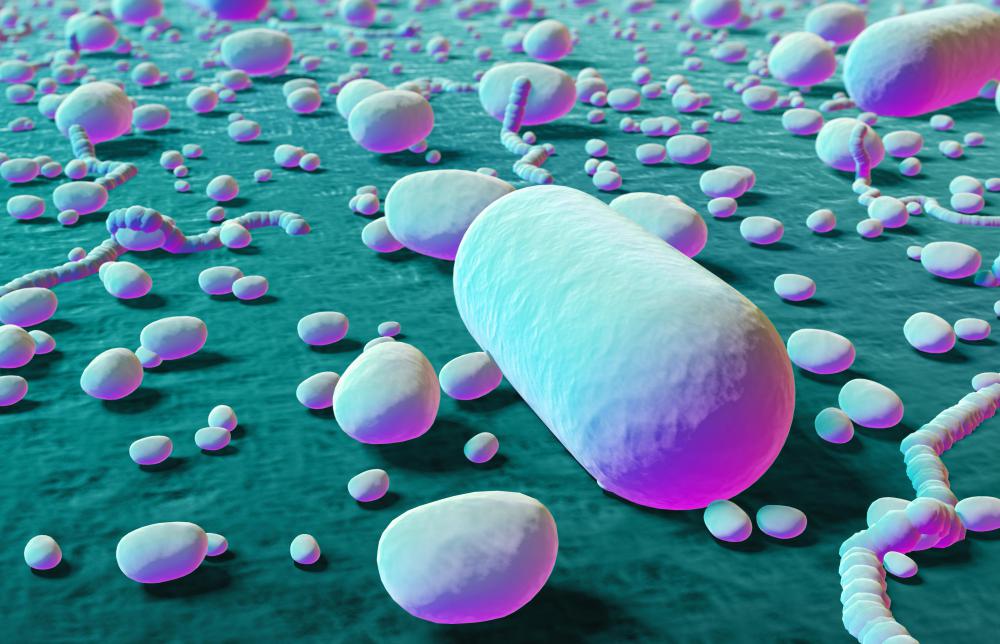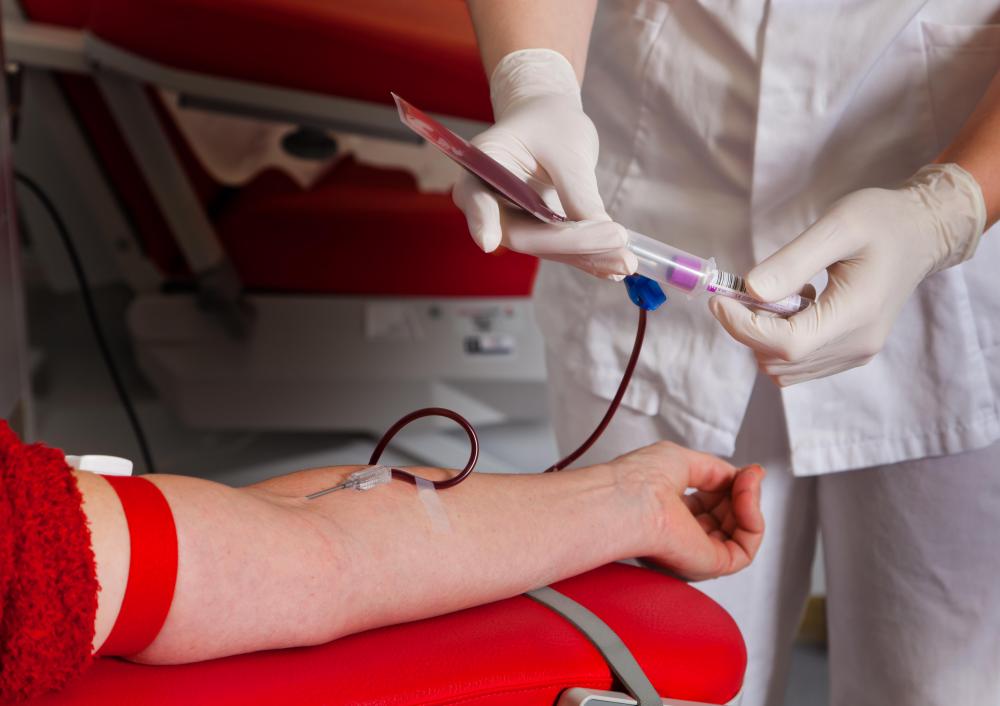At WiseGEEK, we're committed to delivering accurate, trustworthy information. Our expert-authored content is rigorously fact-checked and sourced from credible authorities. Discover how we uphold the highest standards in providing you with reliable knowledge.
What are the Different Types of Tuberculosis Bacteria?
There are two main types of tuberculosis bacteria, although one is fairly uncommon. The primary type of bacteria is called mycobacterium tuberculosis. This accounts for the majority of cases and is generally treatable, especially when caught early. Other types are known as atypical tuberculosis and they come from the same family of bacteria. These are often much more difficult to treat.
Both primary types of tuberculosis bacteria are normally harmless in those with normally functioning immune systems. The atypical varieties normally live inside the body without causing any symptoms and without leading to infection. If symptoms from the primary type of tuberculosis do occur, it usually causes pneumonia in the lungs. Usually the immune system stops the bacteria from spreading by forming scar tissue around it to prevent it from moving from a localized area. When the immune system is compromised, tuberculosis bacteria may migrate into other organ systems like the kidneys or brain.

Rarely, a particular atypical variety of tuberculosis bacteria may be spread through dairy products. This is called mycobacterium bovis. It is now very rare in most industrialized nations due to the widespread pasteurization of milk and all milk byproducts.
When tuberculosis bacteria are able to cause infection due to a compromised immune system, symptoms may include trouble breathing due to pneumonia, weakness, fatigue, fever, severe cough and excessive mucus in the lungs. Rarely, bacteria may spread into other area of the body and cause additional complications. In most cases antibiotics are able to kill the bacteria which causes tuberculosis. Atypical types are often harder to cure and may require a longer span of treatment.

There are certain individuals who are more at risk of developing active tuberculosis infection and additional complications. Those with a weakened immune system due to human immunodeficiency virus (HIV), certain medications, and other illnesses may be at risk of developing an active infection. Infants and very young children are also at a higher risk. Additional at risk individuals include those who live or work with someone who has an active infection, health care workers, and those who care for young children.

Those who have inactive tuberculosis bacteria cannot spread the condition to others and exhibit no symptoms. The infection can become active at a later time during instances when the immune system becomes weakened. Tuberculosis is not the threat it used to be, and most cases are fully treatable when caught early and when medical care is sought immediately.
AS FEATURED ON:
AS FEATURED ON:















Discussion Comments
As the article said, mycobacterium, which is most common, is much easier to treat than the uncommon types.
However, maybe we are hearing more about tuberculosis over the last two or three decades because of the increase in infections that weaken the immune system, such as HIV.
That's just a thought, but doesn't this seem plausible since a healthy immune system is capable of fighting off the bacteria, and preventing tuberculosis from taking hold?
Drentel, I think some of the confusion about tuberculosis stems from not making the distinction between the bacteria that cause the disease and the disease itself.
As the article stated, having the bacteria in your body does not automatically mean you will contract the disease. You could house the bacteria and never have tuberculosis symptoms. So if you have heard more recently about tuberculosis, it may have been the bacteria that was being talked about.
I was reassured by the last paragraph in the article where it mentions how tuberculosis is not the threat it once was and how most cases are treatable.
However, I have heard more about tuberculosis disease over the last several years than I had previously. Actually, I thought the disease was all but wiped out.
Post your comments